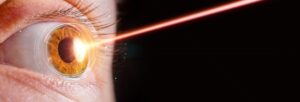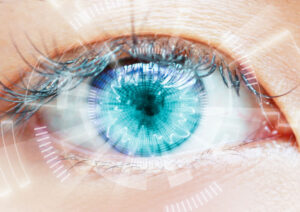
In discussing what is perfect vision, we often find people making reference to the phrase “20/20 vision”. It is deemed by many people to refer to a person who has what we may call perfect vision; which means that the person has no need for glasses or contact lenses and can see just fine. But this idea of eyesight is flawed because 20/20 vision is not exactly what most people believe it is.
We have outlined the most important things one should know about this concept, the importance of vision appointments, the notion of what is perfect vision, and common ways to better one’s eyesight.
The 20/20 Vision Meaning
During the majority of vision appointments, the doctor usually conducts an eye exam to measure and determine the sharpness and clarity of our vision. If any issues are noticed during this process, the doctor may recommend the use of corrective lenses to fix it and help improve our sight. They could be in the form of glasses or contact lenses. By using these corrective tools, the idea is to improve the clarity of sight by changing the way light enters the eye.
Testing Visual Acuity

In the simplest terms, visual acuity refers to how sharp our vision is. During the vision appointments that test visual capacity, the optometrist will use a standardized eye chart. An object will usually be placed at about 20 feet away and then tests and observations are carried out to determine how well the patient can see the object at that distance. With the examination chair also placed at a specific distance from where the patient is sitting, the optometrist will determine if their vision is clear or not. If it’s found to be clear, then the patient can be said to have normal eyesight compared to most people, or the “perfect vision”, which is a common layman’s term.
Visual acuity tests are done using a standardized Snellen eye chart and are carried out on one eye first before moving to the other one. The measurement of visual acuity is static which means that the numbers or letters we’re required to focus on are placed in a stationary position while we’re also sitting in a stationary position.
Typically, the numbers and letters are black in color while the background of the chart will be white, highlighting the need for high contrast conditions when testing for visual acuity.
The numbers or letters on the chart are indicative of the distance someone with normal sight would have to be at in order to see what the patient is seeing at that distance of 20 feet. Depending on the patient’s condition, the numbers will continually change with the top number reflecting the distance between the chart and the patient while the bottom number reflects possible refractive error.
For instance, if we are told that we have a 20/80 vision after the tests, this means that in order to see what someone with standard or “perfect vision” can see at 80 feet away, we have to come within 20 feet distance of that object.
Is It Possible to See Better Than 20/20 Vision?
In answering the question of what is perfect eye vision, it’s important to appreciate several ramifications of visual acuity. That said, there is the concept of legal blindness which refers to a situation where a person’s vision reaches 20/200 or above. On the other hand, it is possible to have a reverse position like a 20/15 vision. This means that standing at 20 feet, the patient sees with clarity what someone with standard vision sees at 15 feet distance.
It might be shocking for someone to have a vision better than what is deemed “normal”. However, it’s not uncommon as there are LASIK corrective procedures that can make this possible, just like there is a 20/20 LASIK option. Therefore, 20/20 vision meaning is actually focused on the standard and the most common vision acuity of people with no need for corrective lenses to live comfortably. In that respect, 20/20 may be the answer to what is perfect vision to some people, but for others, it may not.
Myopia Vs. Hyperopia
Myopia refers to nearsightedness, which is a situation where a person can see objects that are nearby but have serious difficulty focusing on distant objects. On the other hand, Hyperopia is the direct opposite, referring to the ease to focus on objects in the distance but trouble with clearly seeing objects that are very close. This distinction is important in understanding the concept of vision.
Is 20/20 Vision Possible to Achieve?
So, what is perfect eye vision? Based on the previously mentioned 20/20 vision meaning, it is obvious that 20/20 vision is not exactly synonymous with the term “perfect vision” as it is possible to achieve an eyesight clarity better than 20/20. But 20/20 is what you may call the norm and if the patient’s tests reveal that they’re below the norm, they will be referred to a range of potential corrective solutions, from meds to corrective lenses and 20/20 LASIK procedures.
- Glasses: the doctor may recommend this to help with vision correction. The recommended lenses would usually be customized to match the patient’s unique eye problems together with the added option of multiple prescriptions.
- Contact Lenses: these have a similar use as glasses. Some people simply do not like wearing glasses and this could be a good option for them.
- Laser Eye Surgery: this is one of the many perks of modern technology. It’s now possible to use lasers to change the shape of the cornea and thus improve refractive errors. For instance, 20/20 LASIK is a rather common solution in this case.
- Medication: this applies only when the doctor determines that the bad vision is caused by eye disease and certain meds can be useful for slowing down the progression of that disease.
What Are Some of the Issues with 20/20 Vision?

Even if the patient is observed to have 20/20 vision, this is still not a conclusive assessment of how well their eyesight functions in all situations. The reason is that the circumstances of the test can be limiting.
For one, due to the stationary nature of the chart and the specific design and color contrast that numbers and letters come in, the test does not account for the diverse forms of visual stimulation the eyes will be confronted with outside the doctor’s office. The patient’s regular daily activities are not reflected sufficiently in the process of the test.
For the most part, the test is accurate but it is not conclusive in terms of how well one can see things such as objects that have no contrast, differentiated colors, and moving objects.
A Comprehensive Eye Exam
More than simply determining whether a patient has 20/20 vision, taking a comprehensive eye exam will help measure and determine all the possible factors that affect their vision.
The doctor examines both the external and internal parts of the patient’s eye in a bid to assess the overall state of eye health. Usually, this is done using a biomicroscope or a slit lamp which will make the lens, optic nerve, cornea, and retina clearer for the doctor’s observation.
An additional option is a dilated exam which refers to a process where eye drops are applied to the eye to enlarge the pupils and make it possible for the eye doctor to see the back of the eye with more clarity and diagnose the problem.
With everything said, it’s difficult to give an answer to what is perfect eye vision. 20/20 eyesight is the normative bar for seeing without difficulty for a practical, safe, and comfortable lifestyle. However, it’s also possible for people to see with even more clarity than 20/20. Of course, everyone who wants to take care of their eyesight and potentially correct it effectively should make it a point to visit a doctor sooner than later. That said, you are welcome to get in touch with us at Diamond Vision Eye Surgery Center in one of our clinics in New York, New Jersey, Connecticut, and Atlanta. Schedule your free initial consultation and take the first step to see the world more clearly.
Contact Us
If you have more questions about LASIK procedures, get in touch with us.
Related Blogs

Who Should Not Have Laser Eye Surgery
Laser eye surgery, commonly known as LASIK (Laser-Assisted In Situ Keratomileusis), has revolutionized the world of vision correction. It’s a procedure that has enabled millions

LASIK eye surgery: What is LASIK and how does it work?
What Is LASIK? Experts categorize LASIK as a refractive eye surgery in which lasers are used to correct vision problems. LASIK corrects several refractive errors,

Everything You Need To Know About The Lipiflow Treatment
LipiFlow is often referred to as a ground-breaking technology that is able to treat dry eye issues caused by meibomian gland dysfunction, or MGD. Experts
